Chilli Crop Cultivation in India: Varieties & Best Farming Practices

Chilli is one of the most widely cultivated spice crops in India, valued for its fiery taste but also for its significant economic and cultural value. Chilli plays an important role in contributing to rural livelihoods and agricultural exports. In this article, we will delve deeper into the world of chilli cultivation in India, exploring popular and region-specific varieties and best cultivation practices.
Table of Contents
- History of Chilli in India
- What are the Different Varieties of Chillies Found in India?
- Best Farming Practices for Chilli Cultivation
- Recent Statistics on Chilli Production in India
History of ‘Chilli’ in India
Chilli is a fruit of the plant called ‘Capsicum annuum’, belonging to the family of Solanaceae. Throughout the world and all through history, chillies have been used for various purposes including food, beverages, medicinal ointments and balms. Chillies were first introduced to India between late 15th and early 16th century, when Portuguese traders brought it with them on a trading-ship to Goa. Before Spanish-trade brought the present-day chilli to the Indian shore, two varieties of pepper already grew on the land, which were Black pepper and Pippali (long pepper). Easier to grow and much spicier in taste, Chillies eventually replaced Pippali and become a more popular choice among Indians. It eventually found its way into Indian cuisine and traditional Ayurvedic medicine.
Today, India is one of the largest producers, and exporter of chillies in the world. There are over 400+ varieties of chillies grown in India, each with its own unique flavor, colour and heat. Some the highest chilli producing states in India are Andhra Pradesh, Telangana, Madhya Pradesh and Karnataka.
What are the Different Varieties of Chillies Found in India?
India’s diverse climatic condition provides the ideal fertile ground for chilli farming. Different states grow different varieties of chillies, for example Byadgi grows in Karnataka, Bhut Jolokia in Nagaland, Sannam in Andhra Pradesh etc. Below we’ve listed some of the most popular Chillies grown in India, along with their unique traits and growing states.
|
Variety |
Growing States |
Scoville scale (SHU) |
|
Kashmiri Red Chilli |
Jammu & Kashmir, Himachal Pradesh |
|
|
Guntur Chilli |
Andhra Pradesh, Telangana |
30,000 – 60,000 |
|
Byadgi Chilli |
Karnataka |
15,000 – 30,000 |
|
Bhut Jolokia (Ghost Pepper) |
Northeastern Regions (NER) |
1,000,000 – 1,500,000 |
|
Ramnad Mundu Chilli |
Tamil Nadu |
15,000 – 30,000 |
|
Jwala Chilli |
Gujrat, Rajasthan |
20,000 – 50,000 |
|
Sankeshwari Chilli |
Maharashtra |
1000 – 3000 |
|
Dhani Chilli |
Manipur, Mizoram. |
30,000 – 100,000 |
Kashmiri Red Chilli
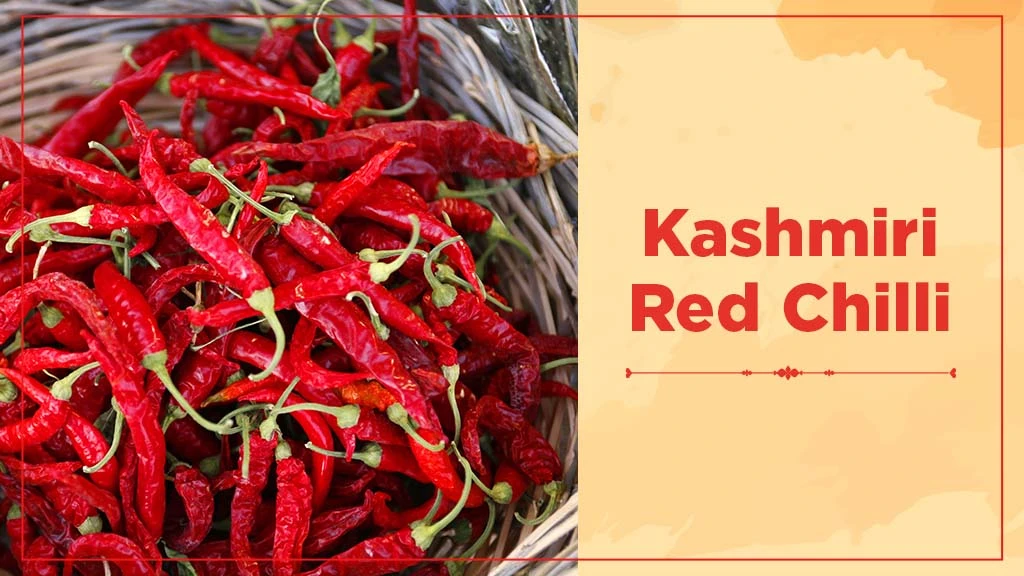
Kashmiri red chilli or Kashmiri Mirch is one of the most popular chilli in India. It is renowned for its deep red color and mild heat. This Chilli is mainly grown in the states of Jammu & Kashmir and Himachal Pradesh. It is a preferred choice in Indian cooking as it adds rich color to the food without the excessive heat. Kashmiri Mirch is mainly used in Indian curries, tandoori dishes, and while preparing sauces.
Guntur Chilli
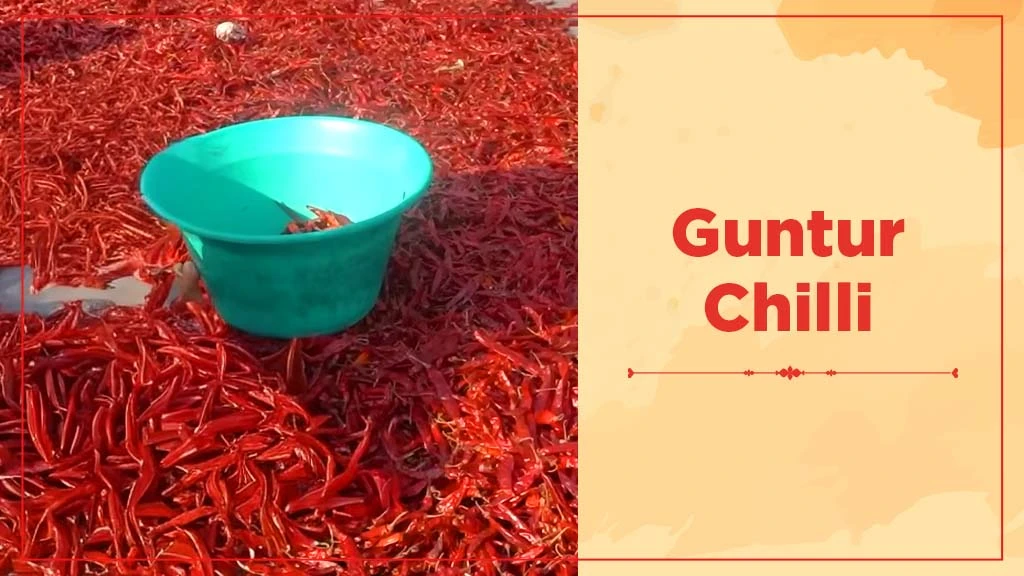
Guntur is primarily grown in the Guntur district of Andhra Pradesh. Guntur chillies are the hottest and most prized varieties in India. These chillies are known for their pungent heat and are used in spicy curries and chutneys. Andhra Pradesh is the largest producer of red chillies in India, and the Guntur variety forms a significant part of that reputation. Guntur Chilli has been granted a Geographical Indication (GI) by the Government of India in 2009.
Byadgi Chilli
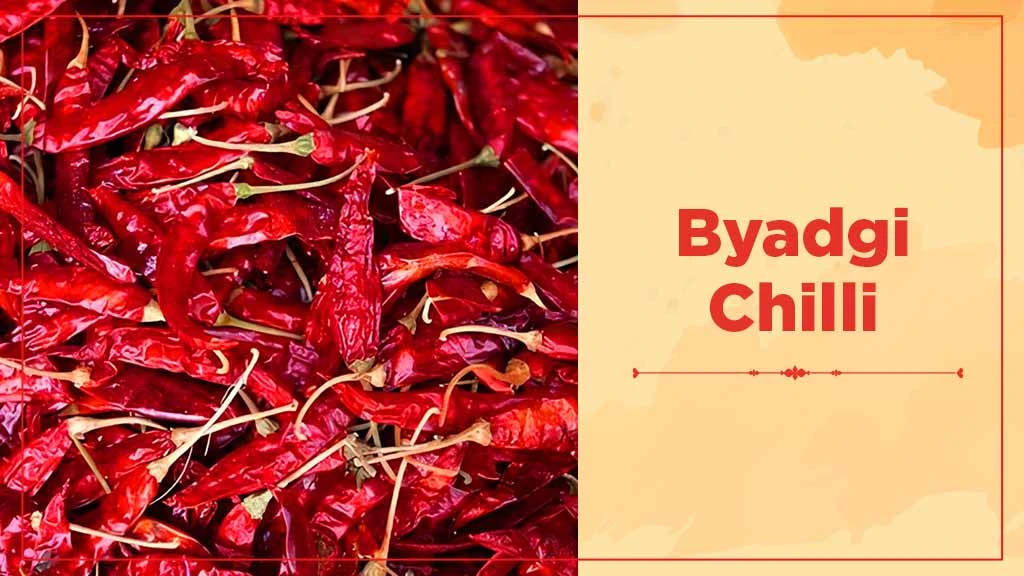
Byadgi Chilli is another popular variety found in the southern states. This variety grows in the Indian state of Karnataka, namely in Havery, Dharwad, Gadag, Raichur, and Gulbarga districts. This chilli is distinguished by its deep red colour, long (12-15 cm) length, thin skin, and wrinkled texture. It is mildly pungent compared to other chillies, hence making it preferable for pickles, masalas, and chilli powder. Byadgi chillies are commonly used in South Indian dishes. Byadgi chilli has been awarded with a GI tag by the government of India.
Bhut Jolokia
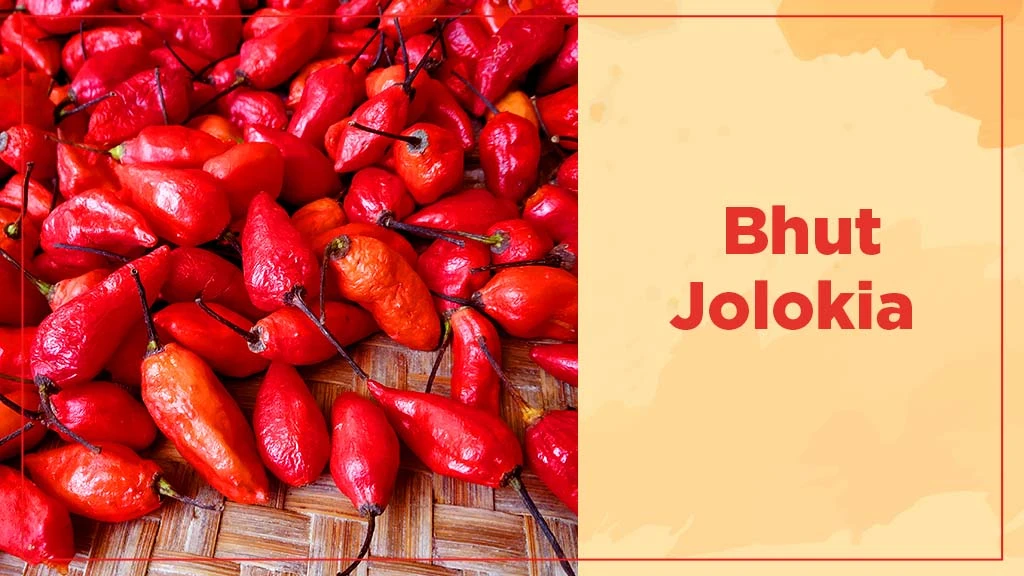
Bhut Jolokia is considered one of the hottest chilli in the world with an SHU of more than 1 million. It is locally known as Naga Mircha or Raja Mircha (King chilli), Bih Jolokia (poison chilli), and 'U morok' in Manipur. However, it is best known worldwide as the 'Ghost Pepper'. This variety of chilli originates from the Northeast Region (NER) of the country, mainly Nagaland, Assam, Mizoram, and Manipur. The chilli is typically 2.5 to 3.5 inches long and comes in different color varieties such as red, yellow and orange. Bhut Jolokia is used in both fresh and dried form to add spice to curries, pickles and Chutneys. Naga chilli received a GI tag in December 2008, acknowledging its unique regional identity.
Ramnad Mundu Chilli
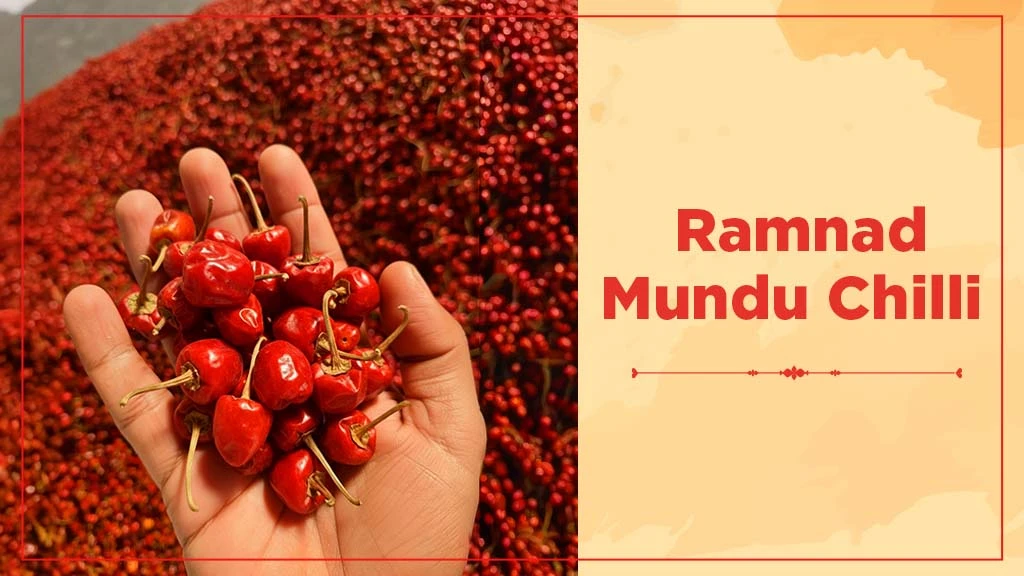
Ramanathapuram Mundu Chilli is distinguished by its round shape and dark red color. This thick-skinned chilli is popularly grown in the Ramanathapuram district, Tamil Nadu. It has been cultivated in the state for over two hundred years. This variety of chilli is the same size as cherries and has a mild yet flavorful taste. These chillies are popularly used in south Indian dishes such as Sambar, chutney and curries. In 2022, Mundu chilli was awarded a GI tag.
Jwala Chilli
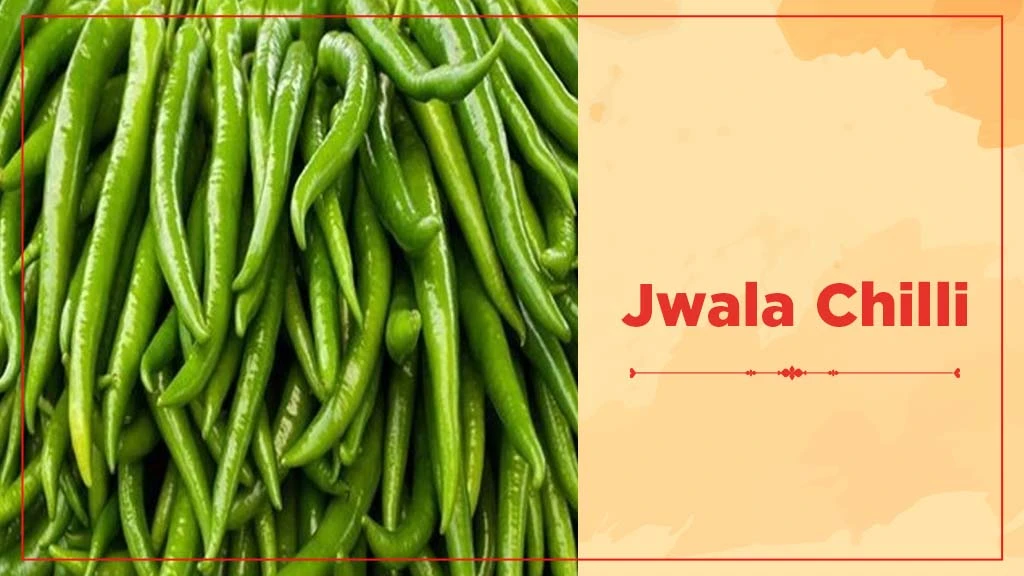
Jwala is one of the most commonly found chillies in Indian households. It originates from the state of Gujrat. This variety of chilli is green in color, long, thin and has wrinkly skin. It has a medium heat level and can be eaten raw or dry or made into a powder. Since it has a slightly sour and hot flavour profile, which makes it a popular choice for pickles, chutney and fresh cooking.
Sankeshwari Chilli
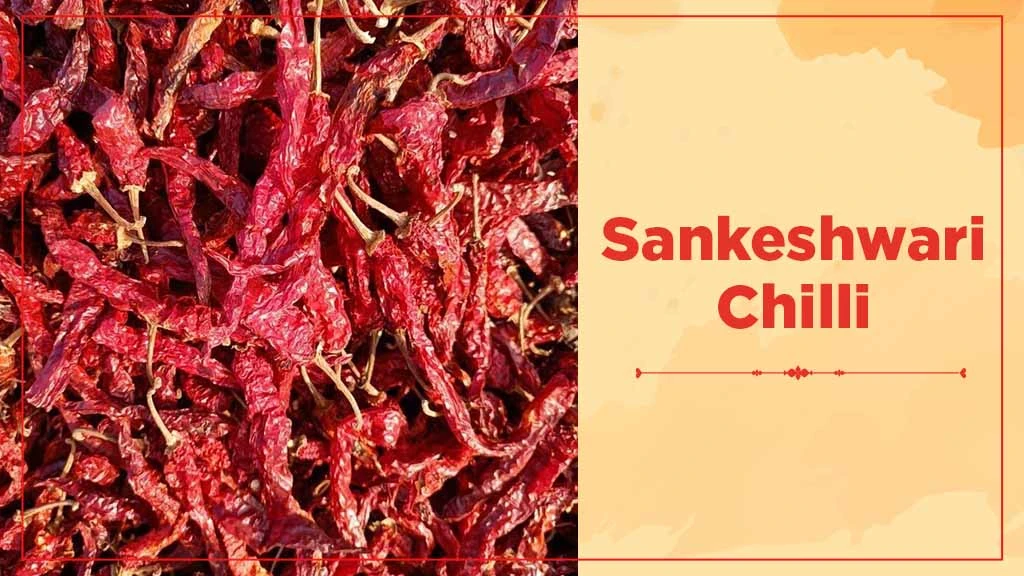
Sankeshwari Chilli is primarily grown in the Sankeshwar region near Kolhapur in Maharashtra, India. It has a rich red color and moderate heat level, with an SHU between 1000 – 3000, which makes it a milder in comparison to many other Indian chillies. Its balanced level of pungency and color is a major reason it is always included in chilli powder formulations.
Dhani Chilli
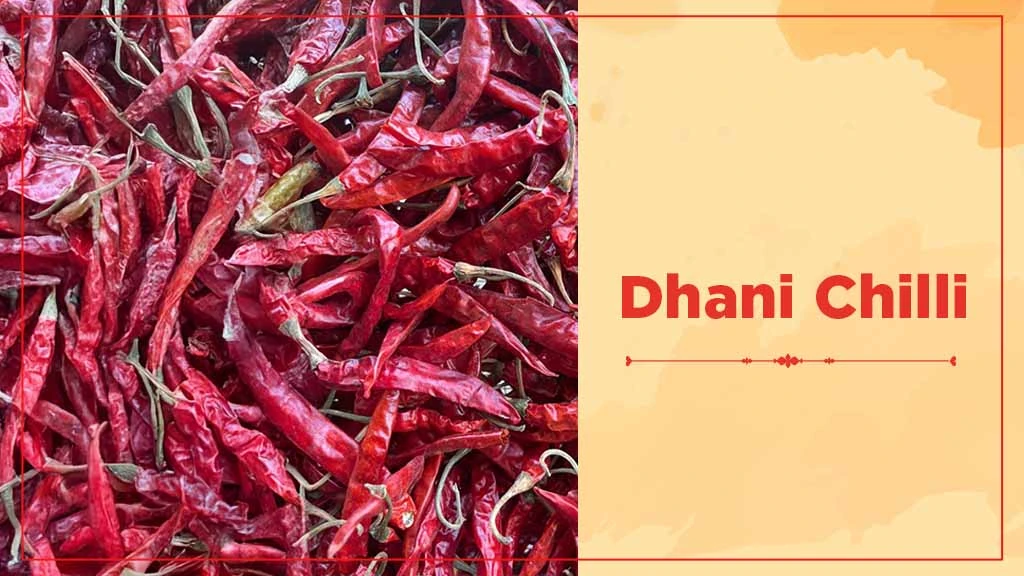
Dhani chillies are short, sharp, and aromatic chillies from the Northeast. It is a bright red color, though it can also come in green or orange hues. Though small in size, this variety of Chilli packs a punch with a high SHU of above 50,000 and an extremely pungent aroma which makes them great for local dishes, homemade pickles and fish or meat curries.
Best Farming Practices for Chilli Cultivation
Soil and Climate: The soil should be loamy, well drained and rich in organic matter with a pH range of 6.5-7.5. Chilli requires a warm and humid climate for its best growth and dry weather during the maturation of fruits. The temperature range should be between 20-25°C.
Nursery Preparation: Chilli seedlings are typically grown in nursery beds before being transplanted to the main field. Prepare raised seedbeds and incorporate well decomposed FYM to pulverized soil. The seeds are treated with Trichoderma viride @ 4g/kg and Pseudomonas fluorescens @ 10g/kg. Sow the treated seeds in lines spaced 5 cm apart and cover them with sand or well decomposed compost. Mulch the bed with paddy straw or green leaves after sowing and remove the mulch once the seeds have started germinating.
Land Preparation & Planting: Prepare the soil to a fine tilth by ploughing/digging. Incorporate 10 tonnes of FYM to the soil during last ploughing. Prepare ridges and furrows at 60 cm spacing. Seedlings are ready to be transplanted after 30-40 days. Irrigate the furrows and transplant the seedlings on the ridges.
Irrigation: Drip irrigation is considered the best method for chilli cultivation. This type of irrigation conserves water, and at the same time delivers water directly to the roots. Irrigation can be done at weekly intervals. Excess irrigation and moisture stress during flower/fruit stage can negatively impact crop health.
Nutrient Management: Recommended basal application involves applying 25 tons of FYM per hectare, along with NPK 30:60:30 kg/ha, for normal seed varieties. In case of hybrid varieties, a higher dose of 30:80:80 kg/ha can be given, along with 30 t/ha FYM.
Harvest & Yield: Chillies can be harvested green or after ripening when they turn red. Proper harvesting methods include using sharp scissors or pruning shears to cut the fruit from the step to avoid damaging the plant. Harvested green chilli is then sold in the market. Chillies are also demanded in dry form. Since they contain high moisture content (60-85%) at the time of harvest, which is brought down to 8-12% with proper drying methods.
Recent Statistics on Chilli Production in India
Recent statistics on Chilli production in India for the year 2023-2024 are as follows:
- According to Centre for Agriculture & Rural Development Policy Research (2023-2024) report India’s chilli cultivation area is approximately 8.09 lakh hectares with estimated production around 29.13 lakh tonnes.
- Top chilli producing states in the country account for 96.8% of the total production.
- Andhra Pradesh remains the top producer with 49.57% of production output for chilli in the country.
- India exported about 4,10,918 MT of red chilli between April 2023 and January 2024.
Frequently Asked Questions On Chilli Crop Cultivation in India: Varieties & Best Farming Practices
1. What is the crop season for chillies?
Chilli is grown in both the Kharif (June-October) and Rabi (November-March) seasons in India.
2. How many chili plants are in 1 acre?
1 acre of green Chilli cultivation can yield up to 15 quintals per acre.
3. What is the best fertilizer for chillies?
For chilli plants, use a balanced, water-soluble NPK fertilizer.


Related Blogs












